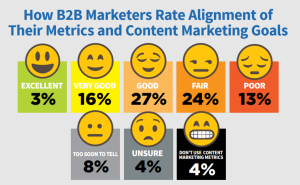Social media doesn’t work without a strategy
Social media can be a highly effective marketing tool. But more often than not, it fails. That’s because it requires hard work, dedication and a willingness to adapt.
Aimlessly posting photos of dogs every few weeks might be cute, but is it really helping you achieve your business goals? The answer is probably no.
Without two important pillars of a successful social media strategy, planning and measuring, your marketing efforts will fall short. Planning and measuring allow you to successfully promote key events and information, understand what’s working on your social channels and revise your strategy accordingly.
So how do you effectively plan and measure your social media? We’ve outlined some key steps.
The planning process
Set SMART goals
SMART goals are specific, measurable, attainable, relevant and timely. When you’re setting social media goals, the key to success is nailing each one of these requirements.
An example of a SMART goal would be to improve your social media click-through rate by 10% over the next year. You’ve identified exactly what you want to achieve, you can measure it, it’s realistic, it is related to your key objectives and it needs to be achieved within a particular time frame.
You should also link your SMART goals to your overall objectives. These can range from increasing brand awareness on social media to getting more conversions on your site.
Do your research and communicate with your colleagues
Knowledge of company events is vital for creating your social media plan. If you are out there doing great things, it’s important that people actually know about it! Create an events calendar which you can use to update your social calendar – and remember to keep it updated regularly.
Research on relevant current affairs and national or global events is also important when planning your social media strategy. People care about brands who have an authentic voice so you need to make sure that you stand for something on your social platforms, whether that’s supporting a charity or championing a cause that’s relevant to your brand.
You should also keep an eye on any upcoming trends and predictions for social media, so you can be proactive with your strategy rather than reactive.
Create a quarterly social media calendar
Planning three months in advance is a good time-scale to have. It gives you enough space to really think through and assign your content, while not running so long that you might risk posting irrelevant or outdated content.
Your calendar should include the individual channels, date of posting and the relevant content. For each post, you want to include an attention-grabbing opener and a call to action. Don’t forget images and video can make or break the success of a social post! You can then schedule your posts using a social media management tool such as Hootsuite or Buffer.
Don’t be afraid to adapt the plan
Unexpected things will happen and it’s important not to be too rigid in sticking to your plan. Ad-hoc social media posts can be just as important as the planned ones in certain situations, you just don’t want your whole strategy to be run on spontaneous thoughts and ideas.
The measuring process
Pinpoint optimal times for engagement
Take a look at the analytics on your social media accounts. There will be peaks and troughs in engagement throughout the week and these will vary depending on your audience demographics. Once you know what works for your audience, you can then choose to post at times which will get the most engagement.
Track engagement and identify top-performing content
You can track engagement across all your social channels and use this to identify your most relevant content. Use that knowledge wisely to create even more killer content that you know your target audience will engage with. When assessing content, focus on what works – you want to replicate your successes!
Don’t be afraid to run experiments
The final piece of advice for social media measurement is to be bold and don’t be afraid to run experiments. You can learn a lot from engagement and high-performing content and you can learn even more by setting up mini social media tests, to prove or disprove your hunches. As long as you keep an eye on the results and change tack accordingly, this is a great way to try out new and creative ideas.
Digital & Social Articles on Business 2 Community
(57)
Report Post







